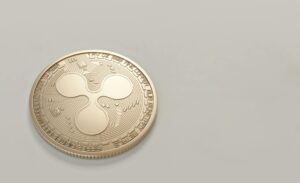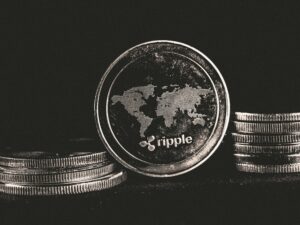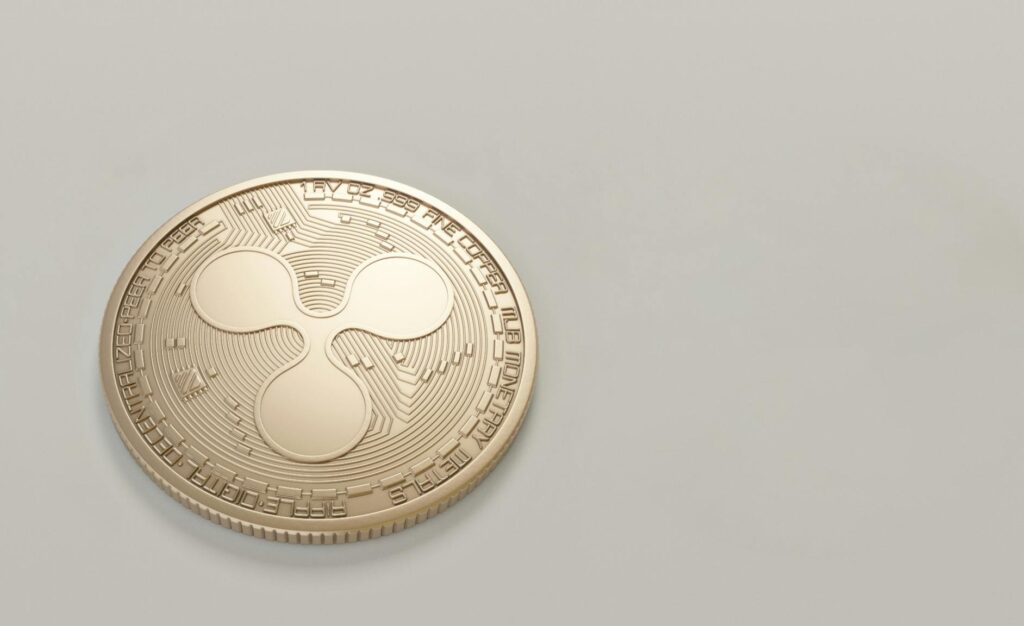Introduction
What is XRP Coin? XRP is a digital currency created by Ripple Labs to make cross-border payments faster, cheaper, and more efficient than traditional systems like SWIFT. Unlike Bitcoin—which is optimized as digital gold and a store of value—XRP acts as a bridge currency that settles transactions in 3–5 seconds with very low fees. Built on the XRP Ledger, it uses a lightweight consensus mechanism instead of energy-intensive mining, making it scalable and eco-friendly. In this complete guide, you’ll learn the clear definition of XRP, its key advantages (speed, cost, scalability), its disadvantages (regulatory risks, centralization concerns, volatility), and realistic price prediction scenarios. You’ll also see a practical Bitcoin vs XRP comparison to understand how their purposes differ, plus a brief history of XRP from RipplePay’s origins to recent legal milestones. By the end, you’ll know whether XRP’s payment-focused design fits your investing or business use case.
Definition: What is XRP Coin?
XRP is the native cryptocurrency of the XRP Ledger (XRPL), a blockchain network created by Ripple Labs in 2012. The coin is represented by the ticker XRP and serves as a digital asset designed to provide fast, secure, and affordable cross-border payments. Unlike Bitcoin, which relies on mining, XRP uses a consensus protocol where validators agree on transactions within 3–5 seconds. for more article What is XRP.
Some of the defining characteristics of XRP include:
- Purpose: XRP is mainly used as a bridge currency for converting one fiat currency into another. For example, instead of converting Indian Rupees (INR) into U.S. Dollars (USD) and then into Japanese Yen (JPY), banks can use XRP to make the transfer seamless.
- Transaction Speed: XRP can settle transactions in just a few seconds, compared to Bitcoin’s 10-minute block time.
- Supply: XRP has a total supply of 100 billion coins, with no new coins being mined. Ripple Labs initially distributed the supply and still holds a significant portion.
- Low Fees: The average transaction cost for XRP is less than $0.01, making it ideal for both small and large payments.
- Scalability: The XRP Ledger can process around 1,500 transactions per second, far higher than Bitcoin or Ethereum.
The XRP ecosystem is powered by RippleNet, a payment network used by banks and financial institutions. RippleNet leverages XRP as an optional liquidity tool for faster settlement. This makes XRP unique in its direct focus on real-world utility rather than just being a speculative asset.
Ripple Labs’ mission is to modernize global finance by replacing outdated infrastructure with blockchain-powered systems. XRP is central to this vision, offering speed, cost-efficiency, and scalability unmatched by many other cryptocurrencies.

Advantages of XRP Coin
One of the main reasons why XRP coin continues to attract investors and institutions is because of its strong set of advantages. Unlike many cryptocurrencies that remain largely experimental or limited to speculative trading, XRP is built with a very specific purpose in mind: to enable fast, cost-efficient, and scalable payments across the globe. Let’s look at the top advantages of XRP coin in detail:
1. Lightning-Fast Transaction Speed
Traditional banking systems can take 3–5 business days for international transactions, while even Bitcoin can take 10 minutes or longer to confirm a block. In contrast, XRP transactions are settled in just 3–5 seconds, making it one of the fastest cryptocurrencies available. This makes XRP ideal for real-world payment use cases, especially for remittances where speed is crucial.
2. Extremely Low Transaction Fees
One of XRP’s biggest strengths is its affordability. The average transaction fee is less than $0.01, which is far cheaper than Bitcoin (often $10–$30 during peak times) and Ethereum (which can cost $5–$50 depending on network congestion). For businesses processing large volumes of payments or individuals sending remittances abroad, this cost-efficiency is a major benefit.
3. High Scalability
Scalability has been a long-standing issue for cryptocurrencies like Bitcoin and Ethereum. XRP, however, can process up to 1,500 transactions per second (TPS) and has the potential to scale even further. This transaction capacity makes XRP more suitable for enterprise-level adoption by banks, payment companies, and financial institutions.
4. Energy Efficiency
Bitcoin and other proof-of-work cryptocurrencies consume massive amounts of electricity due to mining. XRP, on the other hand, does not rely on mining. Instead, it uses a consensus algorithm that is lightweight and eco-friendly. This makes XRP attractive to institutions and investors concerned with sustainability and environmental impact.
5. Strong Partnerships with Financial Institutions
Ripple Labs, the company behind XRP, has built strong partnerships with leading financial institutions worldwide. Banks such as Santander, SBI Holdings, and Standard Chartered have explored Ripple’s payment solutions. These collaborations provide XRP with real-world credibility and adoption potential, something many other cryptocurrencies lack.
6. Liquidity for Cross-Border Payments
A core advantage of XRP is its ability to act as a bridge currency. Instead of converting one fiat currency into another through multiple intermediaries (which increases cost and time), XRP allows for direct and instant conversion. For example, an Indian bank can send INR to a Japanese bank using XRP as a middle asset, saving time and reducing forex costs.
7. Established Market Position
Despite regulatory challenges, XRP has consistently remained among the top 10 cryptocurrencies by market capitalization for many years. This stability gives it more trust compared to newer, less established coins.
Disadvantages of XRP Coin
While XRP coin has many advantages, it also comes with its fair share of disadvantages and risks. Investors should always look at both sides of the coin before making decisions. Here are the key disadvantages of XRP:
1. Centralization Concerns
One of the biggest criticisms of XRP is that it is not as decentralized as Bitcoin or Ethereum. Ripple Labs, the company behind XRP, controls a large percentage of the total supply. At its launch, 100 billion XRP were created, and Ripple initially held over half of that amount. Even today, Ripple owns billions of XRP tokens. This gives the company significant influence over the market, and critics argue that such centralization goes against the original vision of cryptocurrency.
2. Regulatory Challenges
In December 2020, the U.S. Securities and Exchange Commission (SEC) filed a lawsuit against Ripple Labs, claiming that XRP was sold as an unregistered security. This lawsuit caused a major decline in XRP’s value and led to several exchanges temporarily delisting the coin. Although Ripple achieved partial legal victories later, regulatory uncertainty continues to hang over XRP’s future. Governments across the world are still deciding how to classify and regulate cryptocurrencies, and XRP could face stricter rules in certain markets.
3. Dependence on Ripple Labs
Unlike Bitcoin, which operates independently of any single organization, XRP’s success is closely tied to Ripple Labs’ business operations and partnerships. If Ripple fails to expand its network of banks and financial institutions, the utility of XRP could decline. This dependency creates a risk factor for long-term investors.
4. Limited Use Cases Compared to Other Cryptos
While XRP is highly efficient for cross-border payments, it does not support smart contracts, decentralized finance (DeFi), or non-fungible tokens (NFTs) the way Ethereum does. This limited scope reduces XRP’s versatility in the broader crypto ecosystem. As blockchain technology evolves, projects with wider utility may overshadow XRP.
5. Market Volatility
Like all cryptocurrencies, XRP is extremely volatile. Prices can swing dramatically within hours or days, influenced by market sentiment, regulations, and Bitcoin’s overall performance. For example, XRP’s all-time high of $3.84 in 2018 was followed by a massive crash, wiping out billions in investor value. Such volatility makes XRP risky for those looking for stable investments.
6. Delistings and Accessibility Issues
Due to the SEC lawsuit and regulatory pressure, some major exchanges delisted or restricted XRP trading. While many have since reinstated it, the incident shows that regulatory actions can directly affect XRP’s liquidity and accessibility for investors worldwide.

Price Prediction of XRP Coin
Predicting the future price of XRP coin is challenging because it depends on multiple factors like global adoption, regulations, competition, and the overall cryptocurrency market. Still, analysts and investors often study historical trends, technical indicators, and Ripple’s partnerships to make informed predictions. Below are some possible scenarios for XRP’s price in the coming years:
1. Short-Term Outlook (2025–2026)
In the near future, XRP’s performance will largely depend on the outcome of its ongoing regulatory situation in the United States and its adoption by banks. If Ripple continues to expand its partnerships and the SEC lawsuit issues are fully resolved, XRP could trade between $1.50 and $3.00 by 2026. However, if regulations turn negative, XRP may struggle to cross the $1 mark consistently.
2. Mid-Term Outlook (2030)
By 2030, blockchain adoption is expected to be much higher, especially in global finance. Ripple’s network, RippleNet, could play a key role in powering cross-border settlements. If XRP becomes the preferred liquidity solution for banks, analysts suggest that XRP could reach $8 to $12. This would require strong institutional adoption and widespread confidence in Ripple’s technology.
3. Long-Term Outlook (2040 and Beyond)
The long-term potential of XRP is where investors often get excited. Some bullish predictions argue that if XRP achieves mass adoption by central banks, remittance companies, and international financial systems, its price could climb above $50 or even $100 in the next two decades. However, such predictions are highly speculative and depend on XRP replacing or complementing systems like SWIFT on a large scale. news related Ripple News.
Factors That Influence XRP Price
- Regulation: Government policies, particularly in the U.S., directly impact XRP’s market performance.
- Adoption: More banks and financial institutions using RippleNet increase demand for XRP.
- Competition: Stablecoins and CBDCs (Central Bank Digital Currencies) could limit XRP’s role.
- Market Sentiment: Like all cryptocurrencies, Bitcoin’s movement often drives XRP’s price direction.
⚠️ Important Note for Investors: While XRP has strong fundamentals and real-world use cases, the crypto market is unpredictable. Investors should avoid relying solely on optimistic predictions and always diversify their portfolios.
Bitcoin vs XRP
When comparing XRP coin with Bitcoin, it’s important to understand that these two cryptocurrencies were designed for very different purposes. While Bitcoin was built to act as a decentralized digital currency and store of value, XRP was created to improve the efficiency of global payments. Let’s break down the differences: and what is Cryptocurrency.
1. Purpose and Use Case
- Bitcoin (BTC): Known as “digital gold,” Bitcoin’s primary role is as a store of value and hedge against inflation. Many investors see it as a safe-haven asset similar to gold.
- XRP: Functions as a bridge currency for cross-border transactions, enabling banks and institutions to transfer money quickly and cheaply.
2. Transaction Speed and Cost
- Bitcoin: Transactions take about 10 minutes on average, with fees ranging from a few dollars to over $20 depending on network congestion.
- XRP: Settles transactions in 3–5 seconds with fees of less than $0.01. This makes XRP far more practical for day-to-day transfers and institutional use.
3. Consensus Mechanism
- Bitcoin: Uses Proof-of-Work (PoW), which requires miners to solve complex puzzles. This makes it secure but also energy-intensive.
- XRP: Uses a consensus algorithm where trusted validators confirm transactions, making it faster and eco-friendly.
4. Supply and Distribution
- Bitcoin: Has a capped supply of 21 million coins, which creates scarcity and drives its value as a deflationary asset.
- XRP: Has a supply of 100 billion coins, with Ripple Labs holding a large portion. This has led to criticism about centralization.
5. Adoption and Market Position
- Bitcoin: Universally recognized as the first cryptocurrency, with the largest market capitalization and adoption globally.
- XRP: While less recognized by retail investors compared to Bitcoin, it is widely respected among banks and payment providers.
👉 In summary: Bitcoin is digital gold, while XRP is digital cash for global banks. Instead of being direct competitors, they serve different functions in the crypto ecosystem. Bitcoin appeals to investors looking for a hedge, whereas XRP appeals to institutions needing fast and low-cost transactions.
History of XRP Coin
The history of XRP coin begins even before Ripple Labs was founded. In 2004, developer Ryan Fugger introduced the concept of RipplePay, a decentralized payment platform. Later, in 2012, Chris Larsen and Jed McCaleb founded Ripple Labs and launched the XRP Ledger (XRPL) along with the native currency, XRP.
The vision was clear: to replace slow, expensive, and outdated global payment systems like SWIFT with a blockchain-based alternative. Unlike Bitcoin, which focused on decentralization and mining, XRP was pre-mined with a fixed supply of 100 billion tokens. Ripple Labs retained a large portion of this supply, distributing the rest among early users and investors.
Between 2013 and 2017, Ripple signed partnerships with financial institutions and gained credibility in the banking sector. In 2018, during the crypto bull run, XRP hit its all-time high of $3.84, making it the third-largest cryptocurrency by market cap.
However, in 2020, Ripple faced a lawsuit from the U.S. SEC, which accused the company of selling XRP as an unregistered security. This caused XRP’s price to drop sharply and led to exchange delistings. After a lengthy legal battle, Ripple secured partial victories in 2023, restoring investor confidence.
Today, XRP continues to evolve, with Ripple expanding its global partnerships and working towards mainstream adoption in cross-border finance. For More Details XRP Explained
Conclusion
XRP coin has carved out a unique position in the cryptocurrency ecosystem. Unlike Bitcoin, which is primarily a store of value, XRP is designed to solve real-world problems in the financial industry, especially in international payments. Its advantages — fast transactions, low fees, high scalability, and eco-friendly design — make it an attractive option for banks and businesses.
At the same time, XRP is not without risks. Regulatory challenges, centralization concerns, and market volatility remain key hurdles for investors to consider. Still, Ripple’s continued partnerships with major financial institutions give XRP strong long-term potential.
When comparing Bitcoin vs XRP, it’s clear that both assets serve different purposes: Bitcoin as “digital gold” and XRP as a “global bridge currency.” Instead of competing directly, they complement each other in shaping the future of digital finance.
For investors, XRP represents both opportunity and risk. If Ripple achieves its vision of transforming cross-border payments, XRP could play a central role in the future of money. As always, thorough research and careful risk management are essential before investing.
